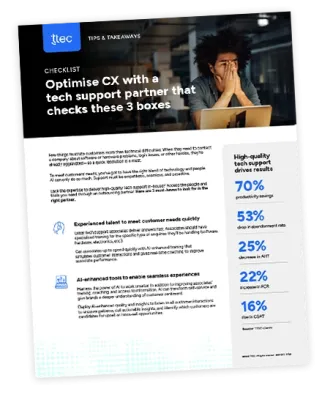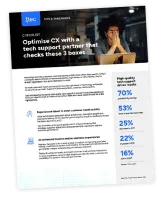We like to think we’re capable of making purely logical decisions - but we’d be lying to ourselves. Studies show that many of our decisions are greatly influenced by emotion. And while marketers have long understood this fact, savvy marketers are upping the ante by harnessing greater data insights and analytics tools.
There are now ways to better connect with customers using algorithms that identify the underlying emotions in text and speech and convert those insights into action.
Why do emotionally connected customers matter? Emotionally connected customers buy more of your products, exhibit less price sensitivity, are less likely to churn, pay more attention to your communications, and recommend you more. What’s more, customers who are emotionally connected with a brand are 52 percent more valuable than customers who are just highly satisfied, reports Harvard Business Review.
At the same time, emotions are:
Individual - How we react to an event or situation is dependent upon what we have experienced before and no two people (including twins) have had exactly the same experiences.
Situational - Emotions are also dependent upon the context of the situation, e.g., what I am trying to do and how I am already feeling.
Fleeting - Even strong emotions don’t last for long, they come and go in moments. However, that doesn’t mean that the effects don’t accumulate over time.
Despite these challenges, our research has shown that it is possible to predict future customer behaviour based on customer emotions. The key is a multi-dimensional score that indicates the likely current emotional state of every customer in a customer database. The core of this system is the Customer Experience Vector (CXV).
CXV combines data science (segmentation, predictive modelling, etc.) with behavioural science (analysis of feelings, perceptions, etc.). The solution converts fleeting emotions into persistent, long-term emotion maps (sets of numbers) that represent each customer’s unique journey.
For example, an automotive client wanted to understand why some customers used their authorised network for servicing their cars and why others did not.
Using emotion analytics (at the heart of CXV) on free-text customer narratives, underlying customer emotions behind the comments were identified and quantified. A direct link was established between three key variables (one of which was a core emotion) and the customers’ likelihood to have their vehicle serviced at that dealer again. The model also showed at what point it was not worthwhile trying to improve the customer’s attitude.
To learn more about how to leverage emotions analytics to predict customer behaviours, check out our e-book, “Get Smart About Customer Emotions”














